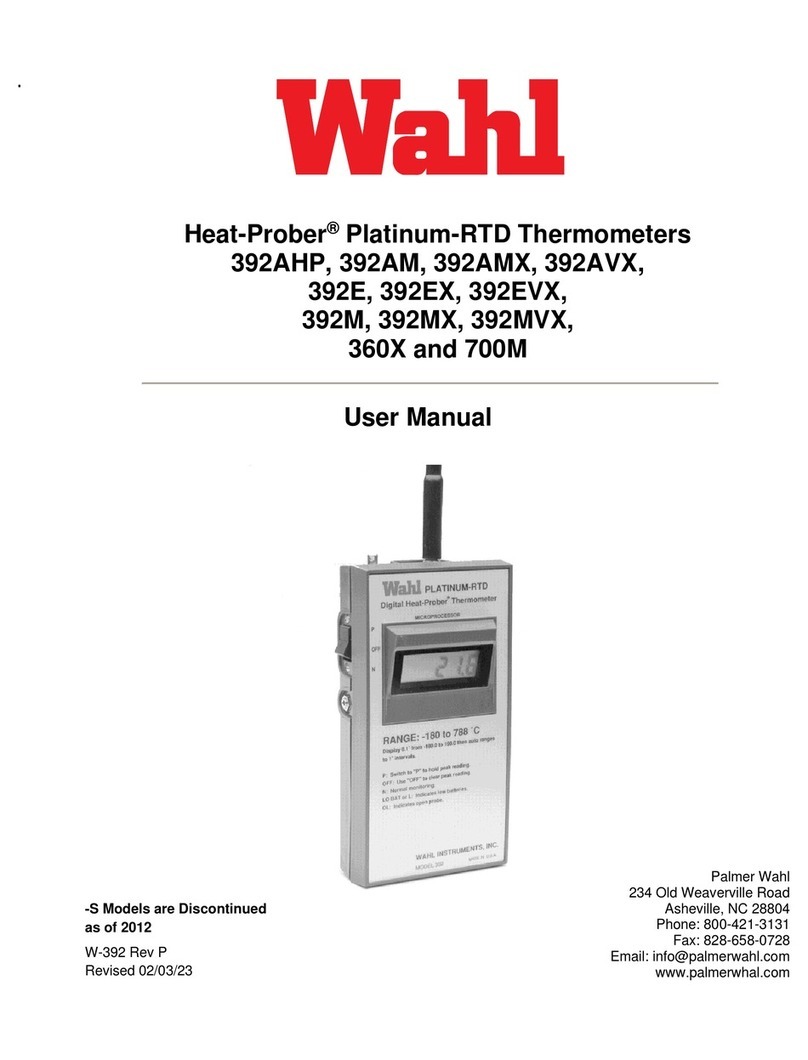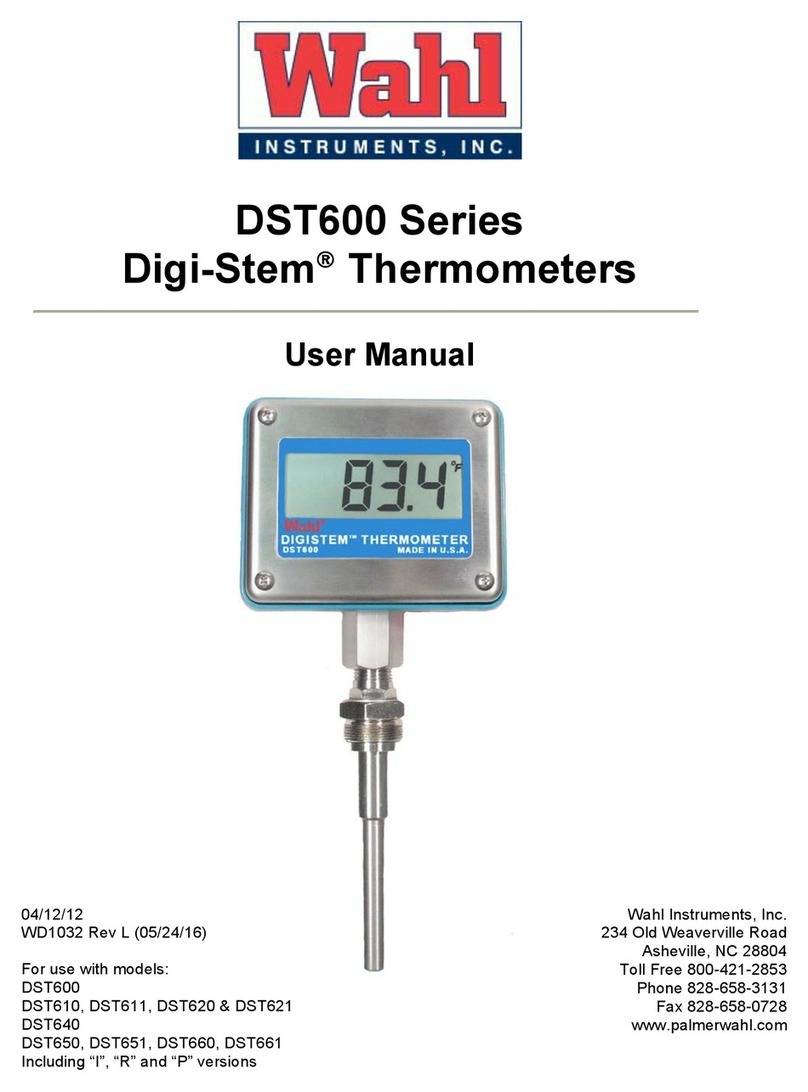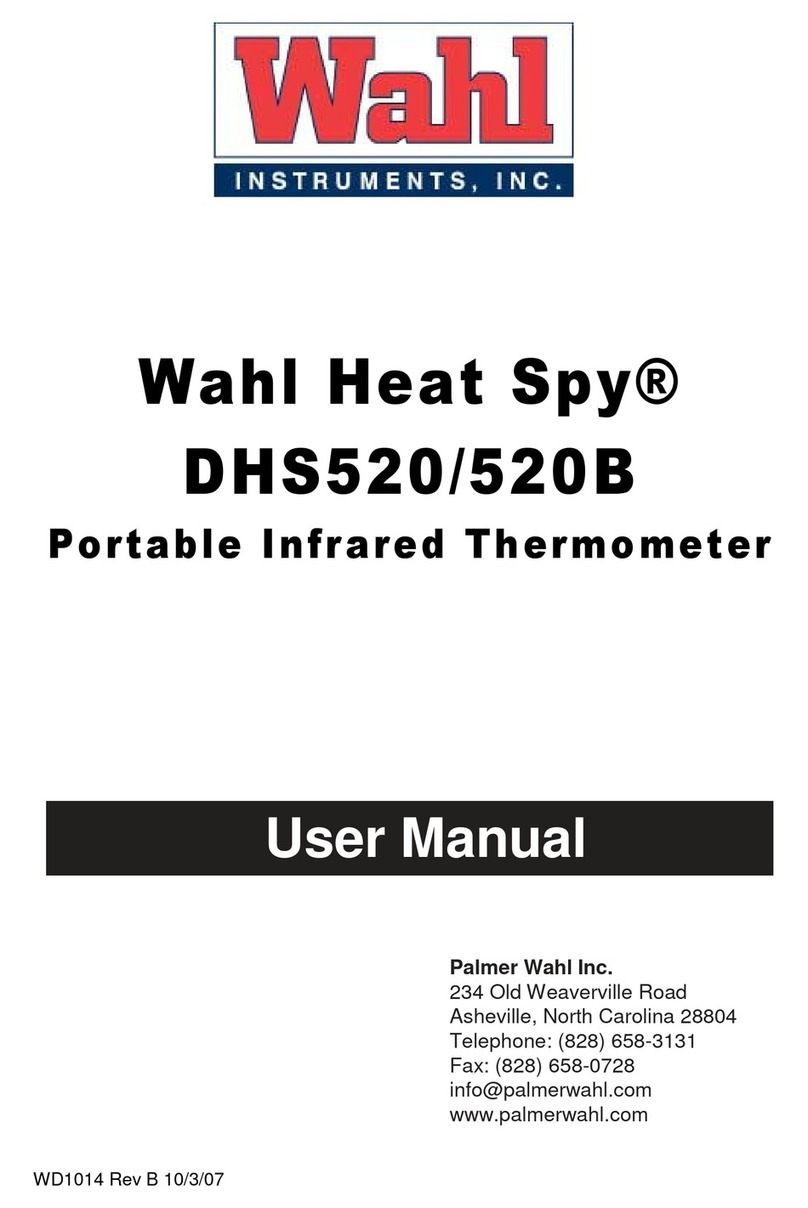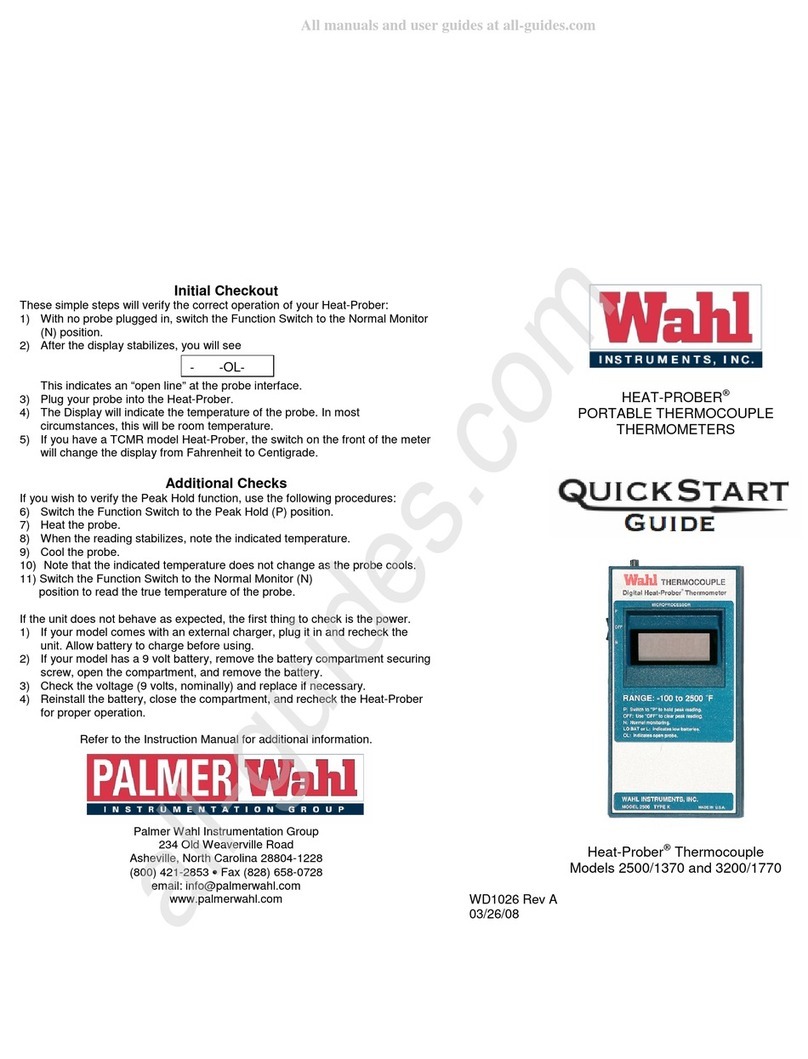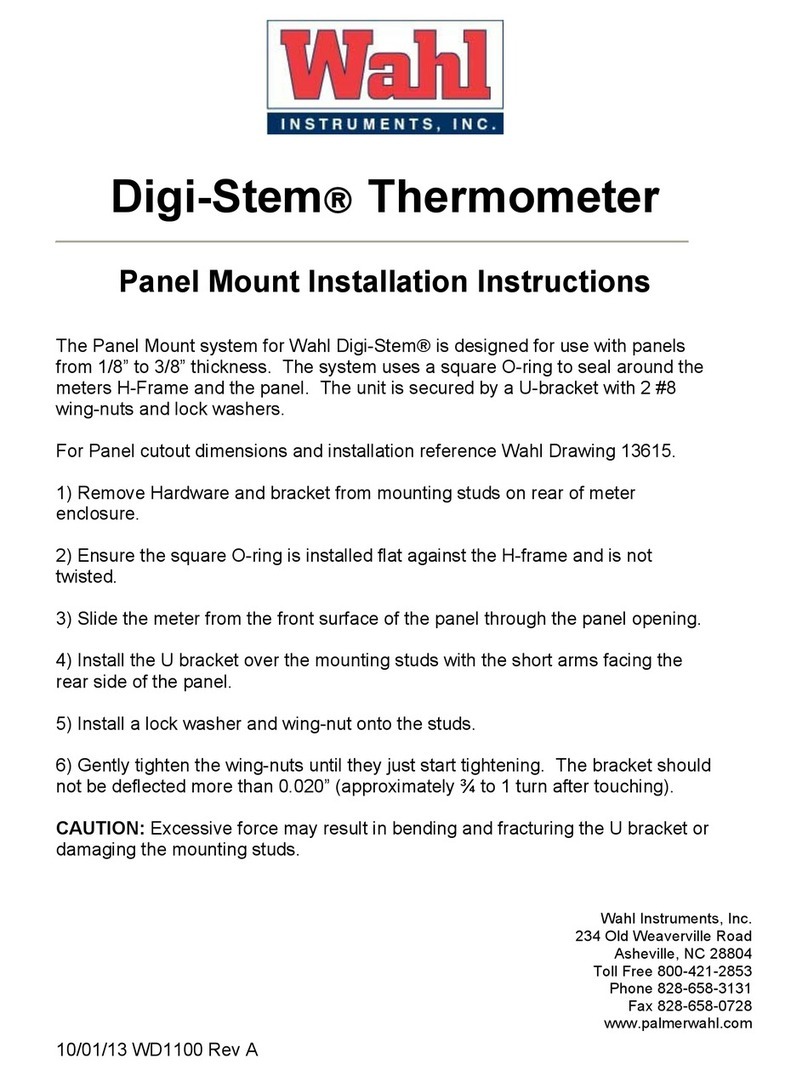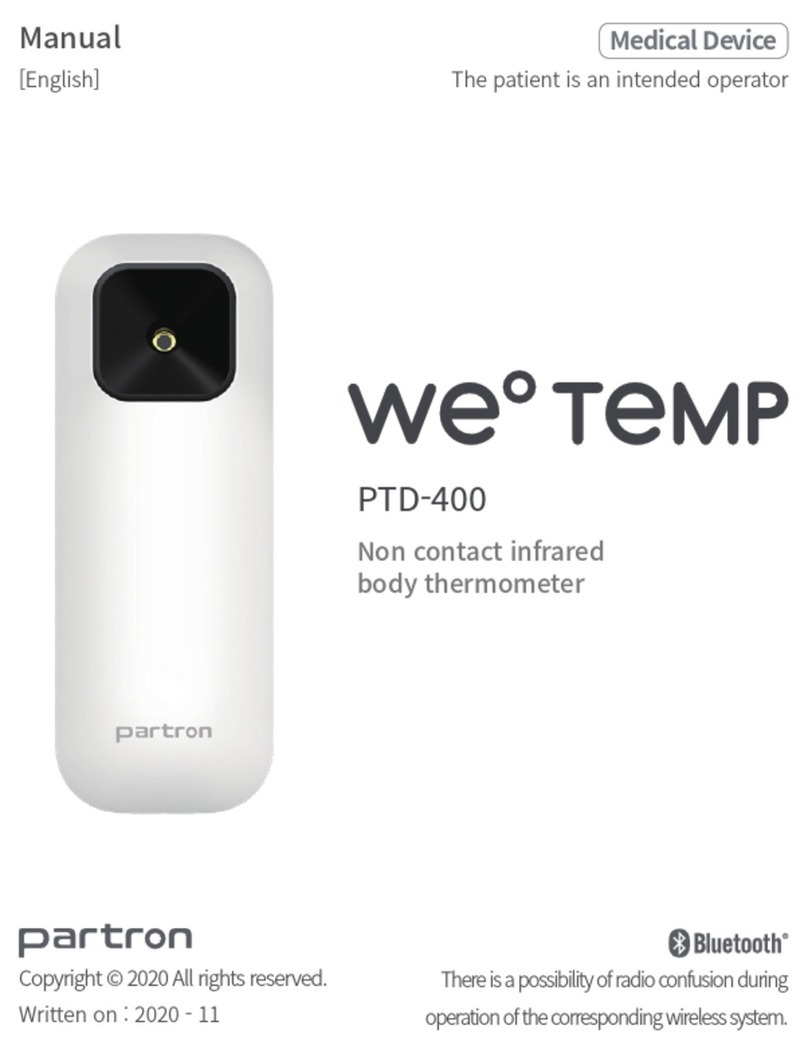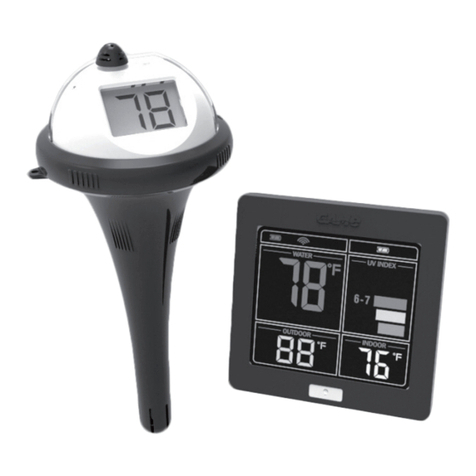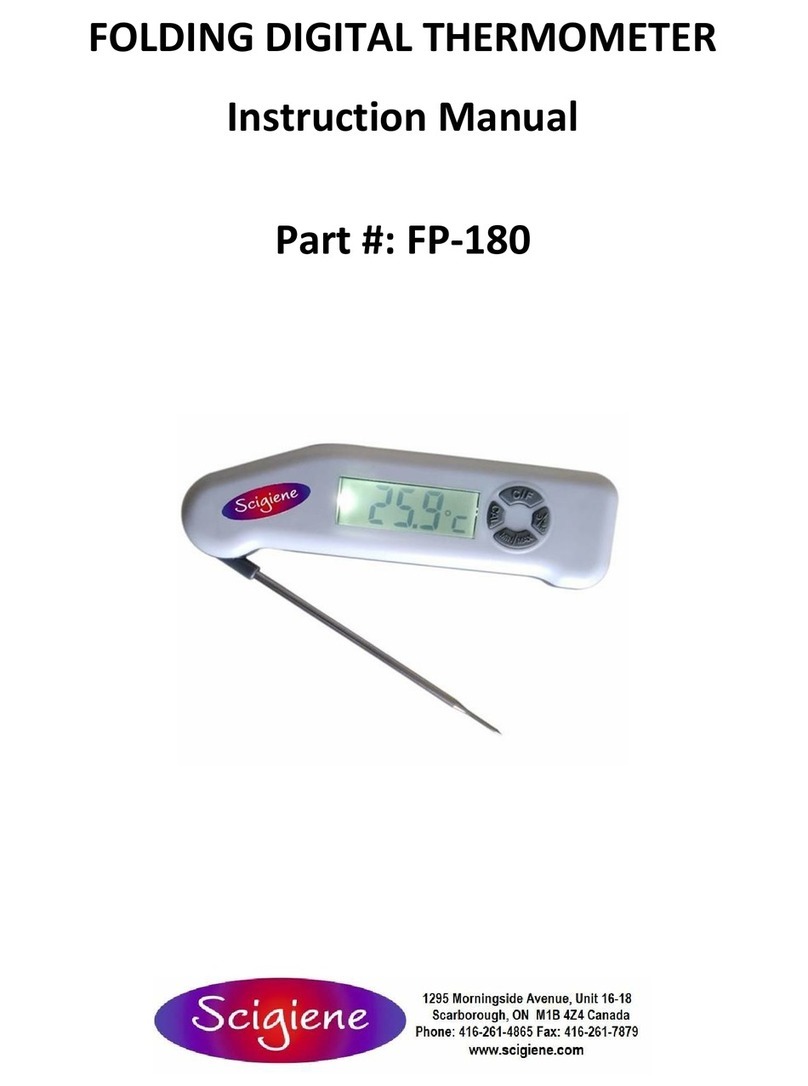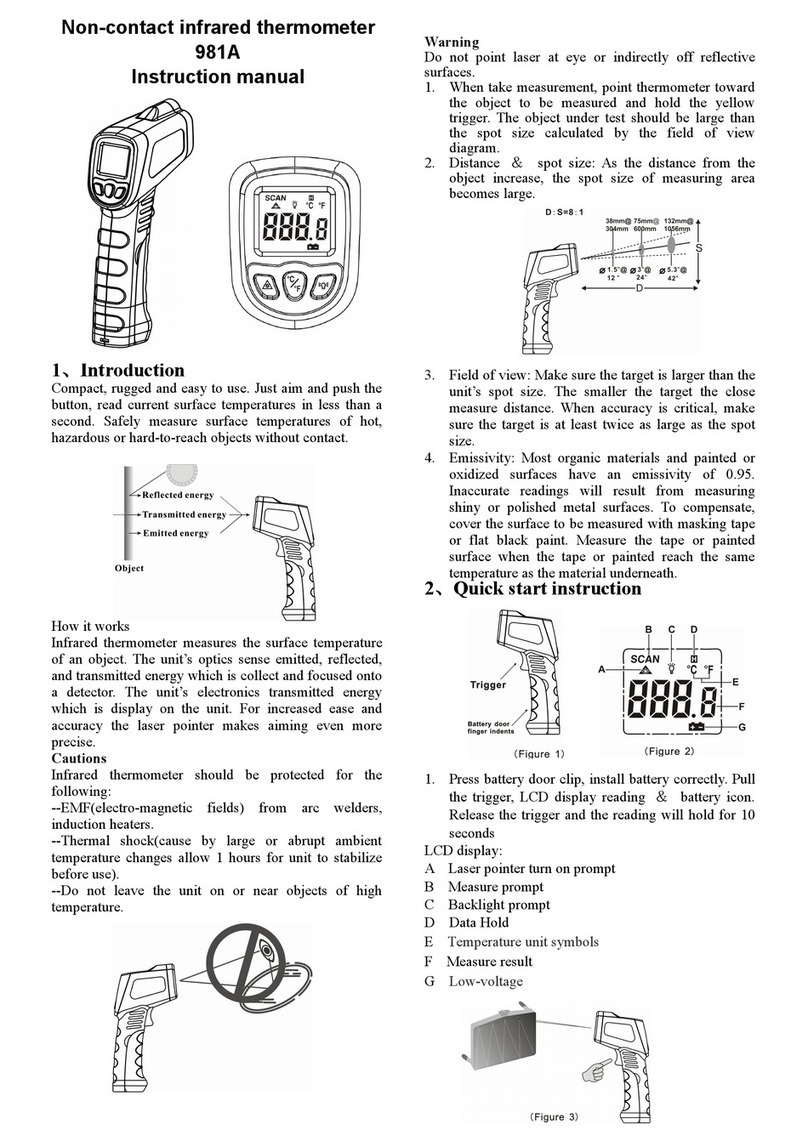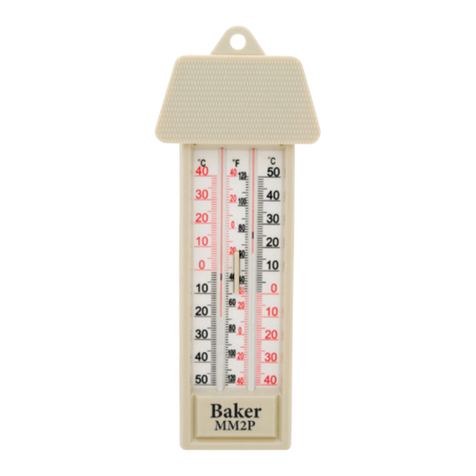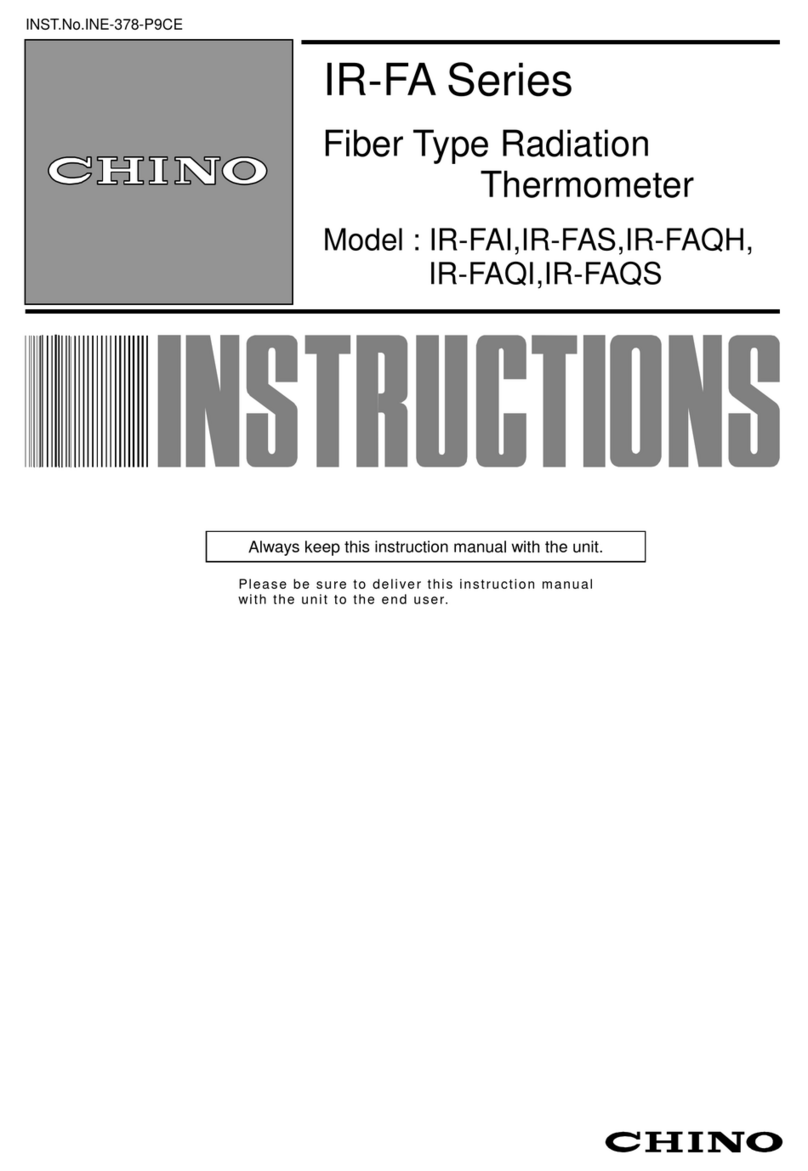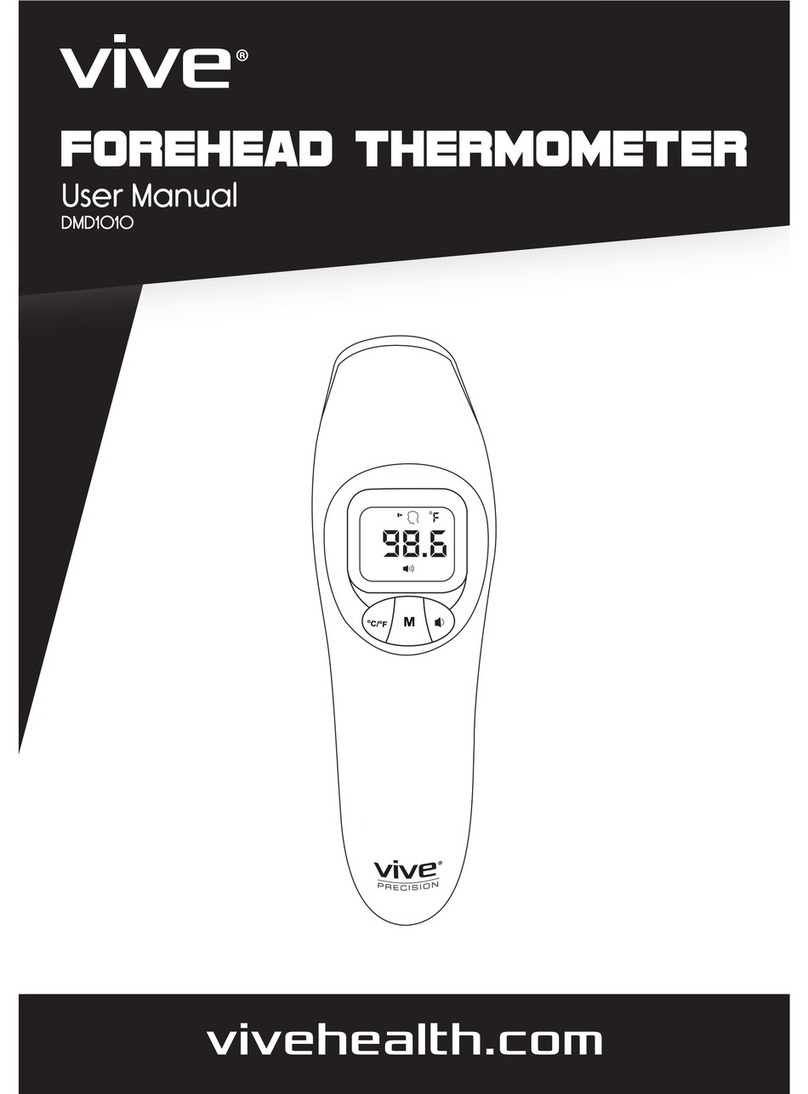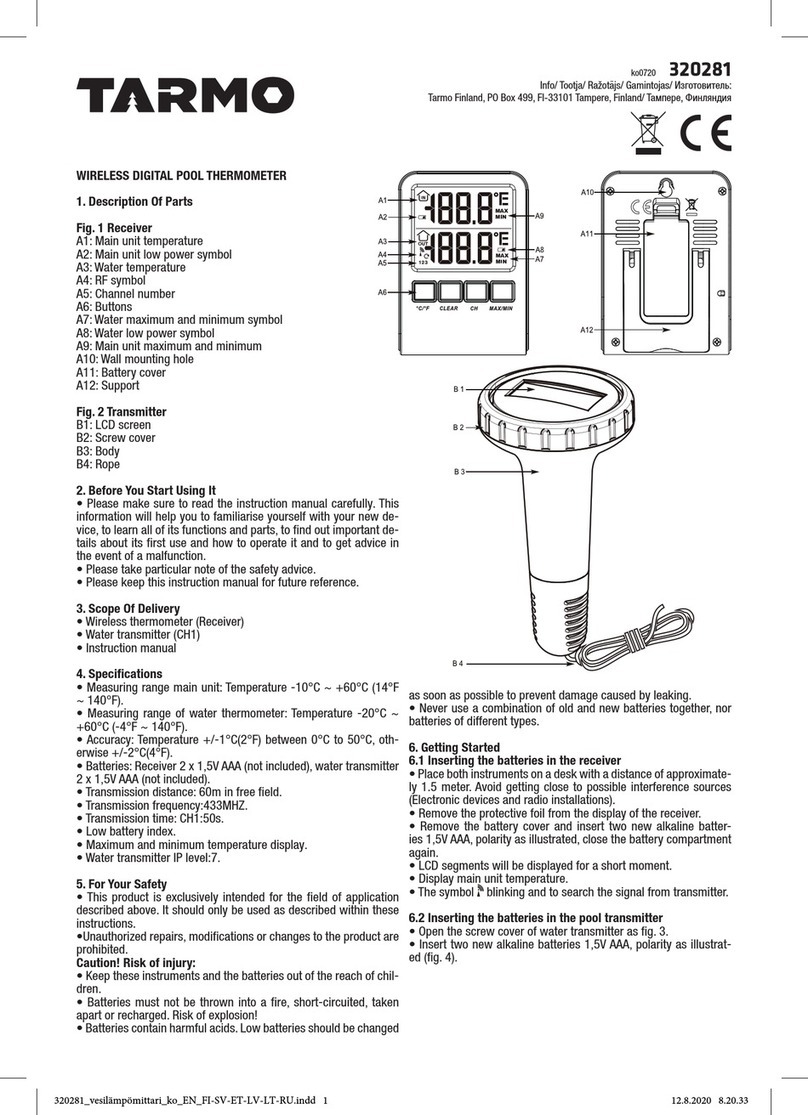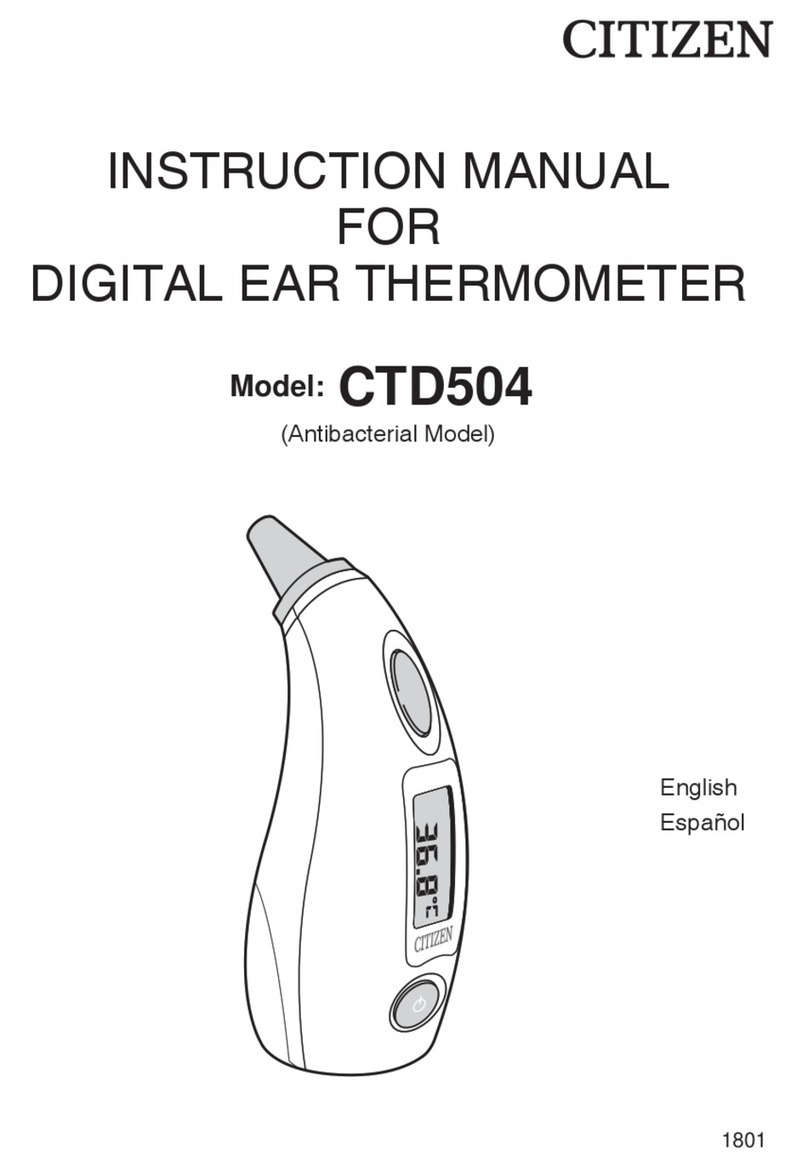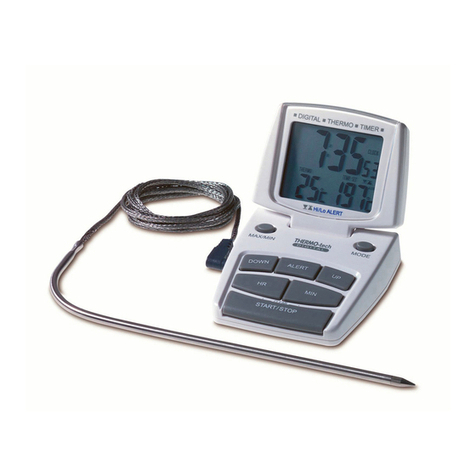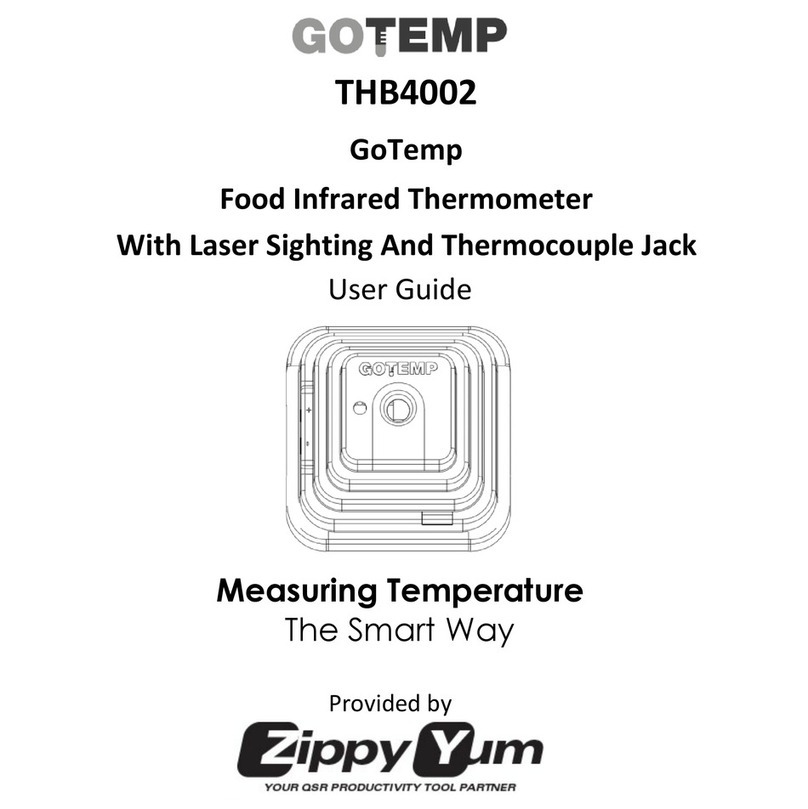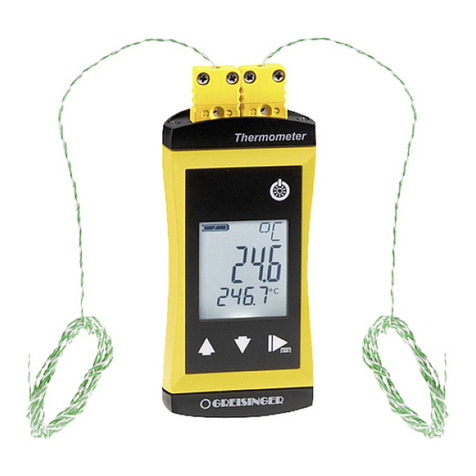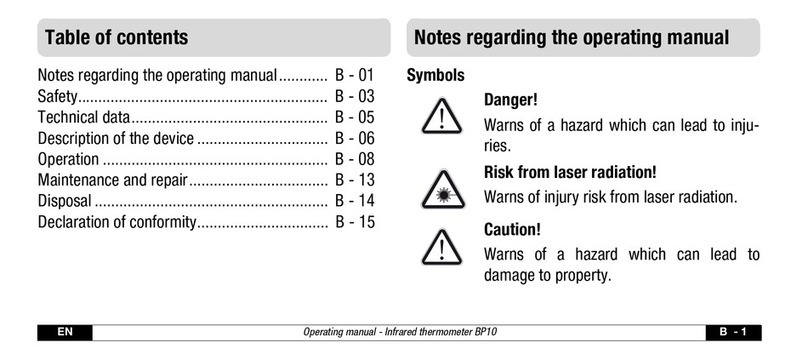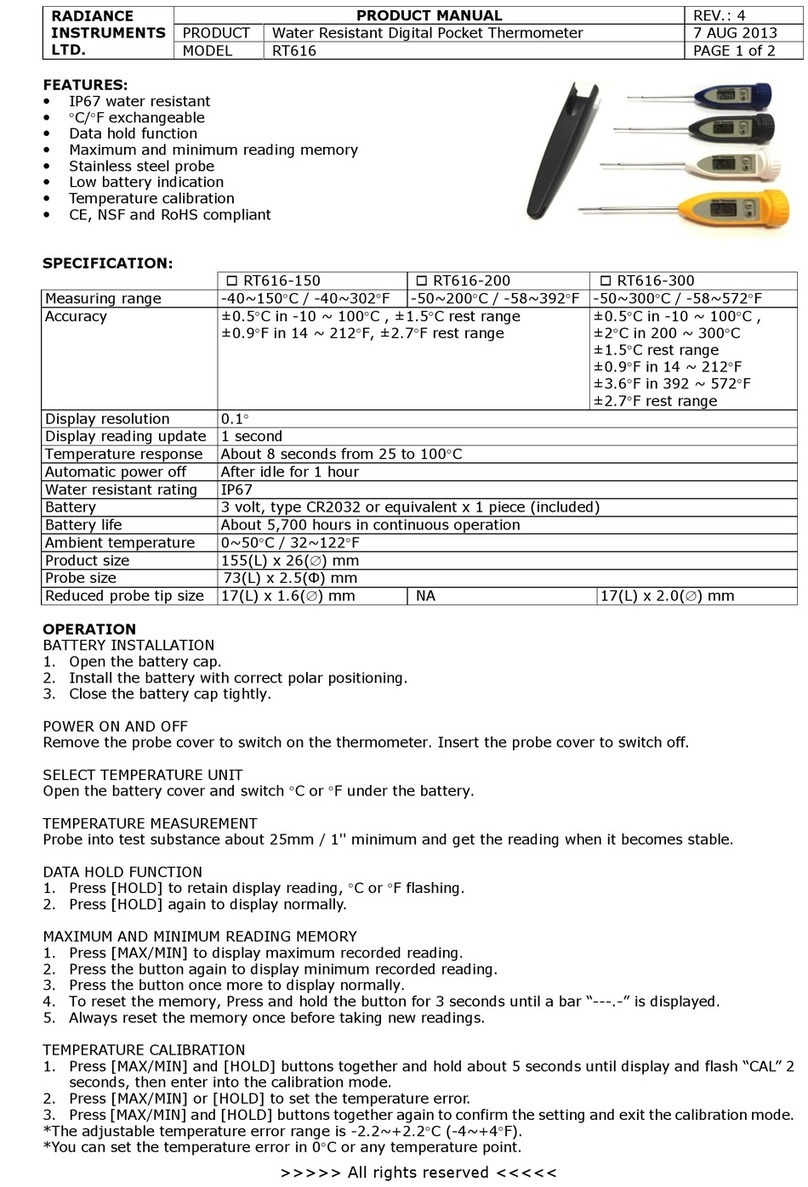TM612
-3 - - 3 -
Unpacking Contents
The TM612 (all references to the TM612 also include the TM612A unless other ise indicated) as checked
mechanically and electrically prior to shipment. The necessary precautions have been taken to ensure it
reaches the user ithout being damaged.
Nonetheless, it is ise to make a quick check to detect any damage that may have occurred during transport.
If this is the case, inform the carrier immediately thereof.
The standard accessories are the follo ing:
•This users guide
•4 AA batteries (1.5V).
•Wrist strap.
•Rubber boot
If service or re-certification of your instrument is needed, please contact us via phone, fax or e-mail, for a
Return Material Authorization (RMA) number.
If the unit is to be returned, it is preferable to use the original packaging and return ith transportation
charges prepaid.
REGISTRATION at
www.palmerwahl.com/register
Registration is fast and easy. In about a minute you can
have your product automatically registered for Warranty
Protection and our Calibration Reminder service. Let
Palmer Wahl help you protect your investment, and
maintain product accuracy and compliance with ISO and
other quality standards.
Questions? Call Customer Service
at 1-800-421-2853 or 828-658-3131,
Or email: register@palmerwahl.com
Wahl Instruments, Inc.
234 Old Weaverville Road
Asheville, NC 28804 USA
Phone: 800.421.2853
828.658.3131
Fax: 828.658.0728
e-mail:rma@palmer ahl.com
ebsite: .palmer ahl.com
TM612
- 4 -
Contents
A. General ................................................................................................................... 5
A.1 Introduction .......................................................................................................... 5
A.2 Parts ................................................................................................................... 5
A.3 Safety.................................................................................................................. 5
A.3.1 Complianc e ith safety s tandards ........................................................................ 5
A.3.2 Environmental conditions ................................................................................... 6
A.3.3 Worn devices .................................................................................................. 6
A.3.4 Device destruction procedure .............................................................................. 6
A.3.5 Instructions .................................................................................................... 6
A.3.6 Making measurements ...................................................................................... 6
A.3.7 Defects and abnormal stresses ............................................................................ 6
A.3.8 Definitions...................................................................................................... 7
A.4 Maintenance .......................................................................................................... 7
B. Using the instrument .................................................................................................. 8
B.1.1 The keyboard .................................................................................................. 8
B.1.2 The measuring and simulation terminals ................................................................ 9
B.1.3 The USB connector ......................................................................................... 12
B.1.4 The screen ................................................................................................... 12
B.1.5 Getting started (after po er-up) ........................................................................ 13
B.1.6 Main characteristics ........................................................................................ 13
C. Mode Programming .................................................................................................. 14
C.1.1 Resistance or temperature measurement using resistive sensors ................................ 14
D. Related Functions..................................................................................................... 16
D.1 Sc aling............................................................................................................... 16
D.2 Differential measurements ...................................................................................... 17
D.3 Calibrated sensors ................................................................................................ 18
D.4 Storage of acquisitions in progress. ........................................................................... 20
E. Parameter settings ................................................................................................... 27
E.1 Contrast adjustment .............................................................................................. 27
E.2 Date and time setting ............................................................................................ 27
E.3 “Preferences” setting. ............................................................................................ 28
E.3.1 Filtering setting. ............................................................................................ 28
E.3.2 Display resolution setting. ................................................................................ 28
E.3.3 Lighting duration setting. ................................................................................. 28
E.3.4 “Key beeping” setting. ..................................................................................... 28
E.3.5 Language setting ........................................................................................... 28
E.3.6 Temperature unit setting ................................................................................. 29
E.4 “Maintenance” menu ............................................................................................. 29
E.4.1 Adjustment from the Maintenance menu .............................................................. 29
E.5 “About the instrument” menu .................................................................................. 31
F. Soft are Update ...................................................................................................... 32
G. Technical specifications.............................................................................................. 33
G.1 Measurement Function ........................................................................................... 33
G.1.1 Resistance ................................................................................................... 33
G.1.2 Temperature by resistive sensors. ...................................................................... 33


